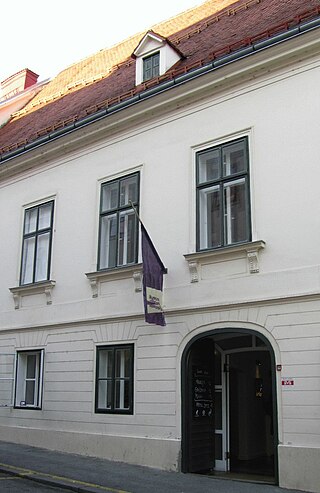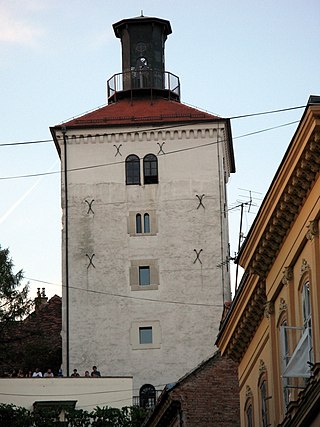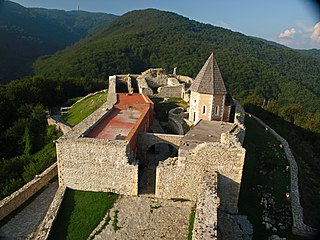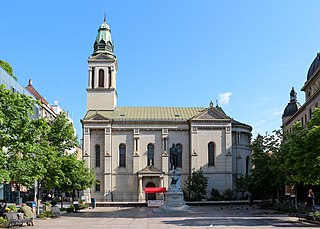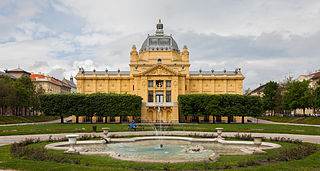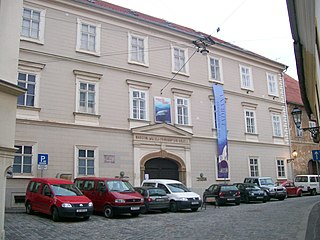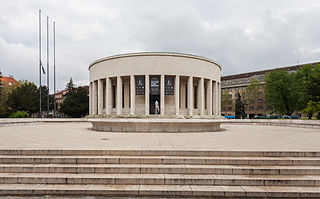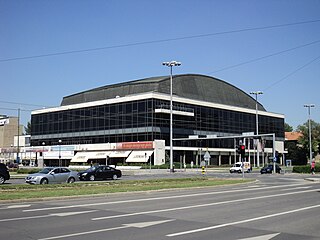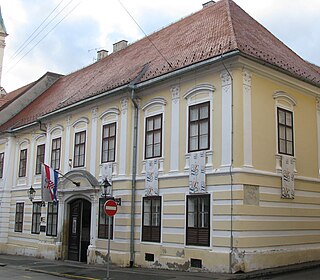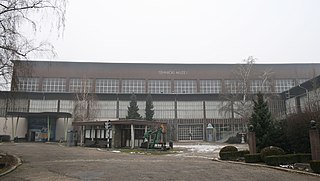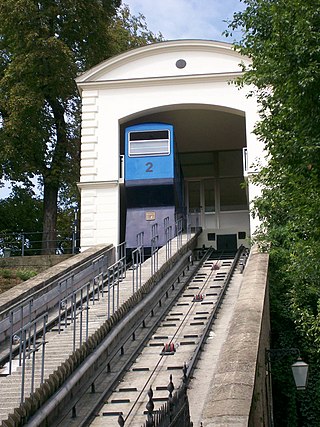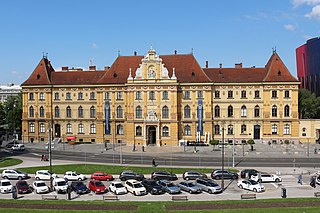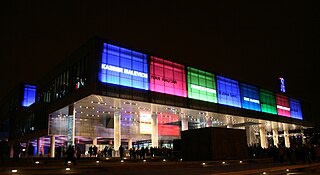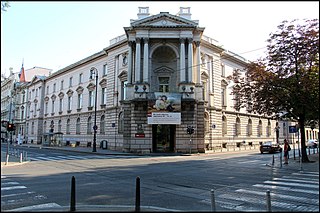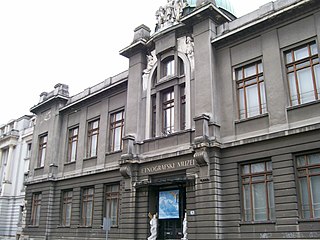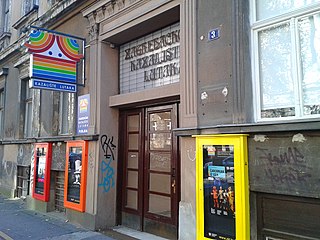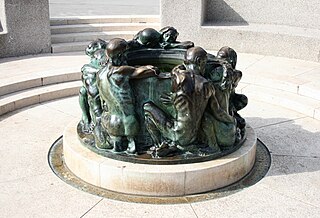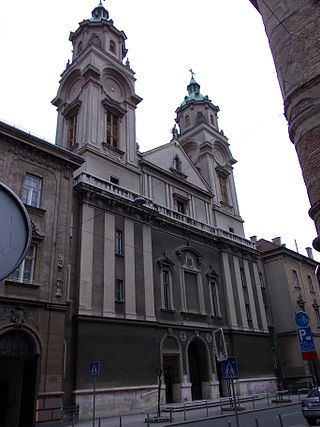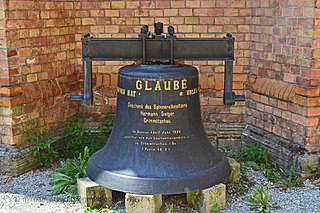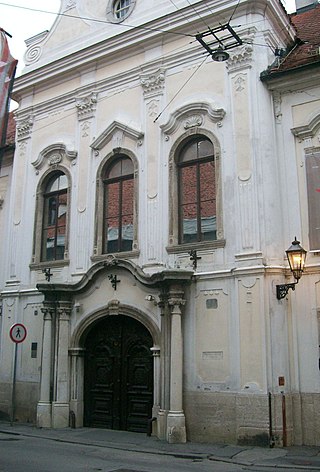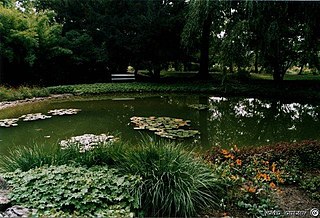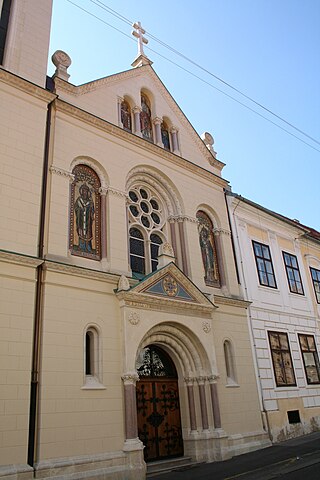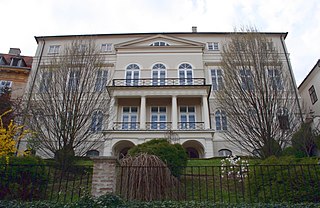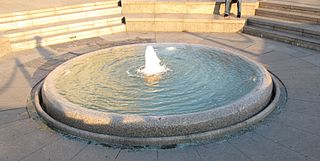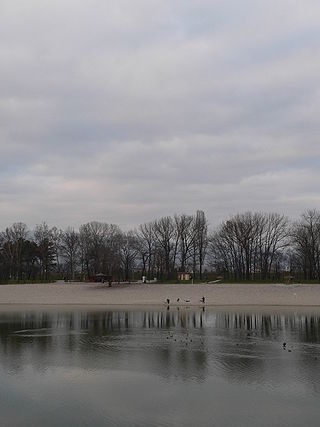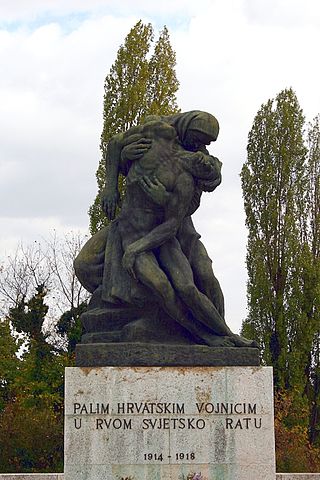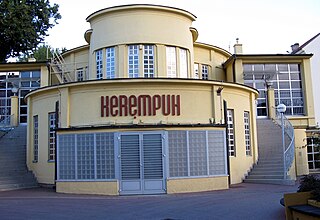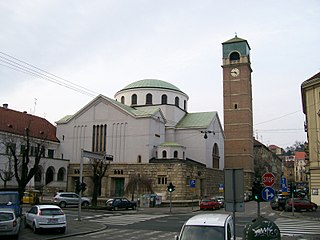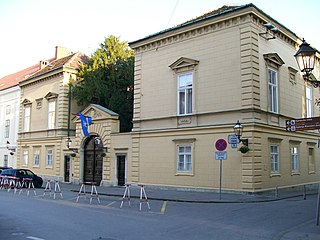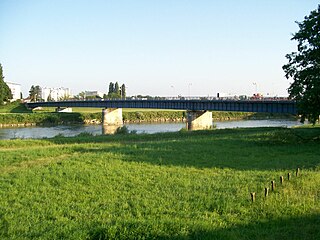35 Sights in Zagreb, Croatia (with Map and Images)
Legend
Premium Sights
Book tickets, guided tours and activities in Zagreb.
Guided Free Walking Tours
Book free guided walking tours in Zagreb.
Welcome to your journey through the most beautiful sights in Zagreb, Croatia! Whether you want to discover the city's historical treasures or experience its modern highlights, you'll find everything your heart desires here. Be inspired by our selection and plan your unforgettable adventure in Zagreb. Dive into the diversity of this fascinating city and discover everything it has to offer.
Sightseeing Tours in ZagrebActivities in ZagrebThe Museum of Broken Relationships is a museum in Zagreb, Croatia, founded by artists Olinka Vištica and Dražen Grubišić. It grew from a traveling exhibition revolving around the concept of failed relationships and their ruins. The museum features a diverse collection of objects, each representing a personal story of a past relationship, contributing to a broader narrative of human emotional experiences.
The Lotrščak Tower is a fortified tower located in Zagreb, Croatia, in an old part of town called Gradec or Gornji grad. The tower, which dates to the 13th century, was built to guard the southern gate of the Gradec town wall. The name is derived from Latin campana latrunculorum, meaning "thieves' bell", referring to a bell hung in the tower in 1646 to signal the closing of the town gates.
Medvedgrad is a medieval fortified town located about 10 km north of Zagreb, on the south slopes of Medvednica mountain, approximately halfway from the Croatian capital Zagreb to the mountain top Sljeme. For defensive purposes it was built on a hill, Mali Plazur, that is a spur of the main ridge of the mountain that overlooks the city. On a clear day the castle can be seen from far away, especially the high main tower. Below the main tower of the castle is Oltar Domovine which is dedicated to Croatian soldiers killed in the Croatian War of Independence. The altar of the homeland, made by the sculptor Kuzma Kovačić, was opened by Croatian President Dr. Franjo Tuđman, May 30, 1994.
4. Hrvatska narodna banka
The Croatian National Bank, known until 1997 as the National Bank of Croatia, is the Croatian member of the Eurosystem and has been the monetary authority for Croatia from 1991 to 2022, issuing the Croatian dinar until 1994 and subsequently the Croatian kuna until Croatian adoption of the euro on 1 January 2023. It has also been Croatia's national competent authority within European Banking Supervision since 2020. It was initially established in 1972 under the decentralization of the National Bank of Yugoslavia, and became a fully-fledged central bank in late 1991 with the independence of Croatia.
5. Cathedral of the Transfiguration of the Lord
The Cathedral of the Transfiguration of the Lord is a Serbian Orthodox cathedral located on the Petar Preradović Square in Zagreb, Croatia. It was built in 1865–66 according to designs of architect Franjo Klein. It is ecclesiastically part of the Metropolitanate of Zagreb and Ljubljana and is known as the Zagreb Orthodox Cathedral. Due to 2020 Zagreb earthquake the Cathedral went to re-construction due to mayor damages that occurred.
6. Umjetnički paviljon
The Art pavilion in Zagreb is an art gallery in Zagreb, Croatia. The pavilion is located on the Lenuci Horseshoe, Lower town area of the city, south of Nikola Šubić Zrinski Square, on the northern side of the King Tomislav Square which flanks the Zagreb Central Station. Established in 1898, it is the oldest gallery in the Southeast Europe and the only purpose-built gallery in Zagreb designed specifically to accommodate large scale exhibitions.
7. Museum Natural History
The Croatian Natural History Museum is the oldest and biggest natural history museum and the main body for natural history research, preservation and collection in Croatia. Located on Dimitrije Demeter Street in Gornji Grad, one of the oldest neighbourhoods of the Croatian capital Zagreb, it owns one of the biggest museum collections in Croatia, with over 2 million artefacts, including over 1.1 million animal specimens. It was founded in 1846 as the "National Museum". The National Museum was later split up into five museums, three of which were in 1986 merged as departments of the newly named Croatian Natural History Museum. The museum contains a large scientific library open to the public, and publishes the first Croatian natural history scientific journal, Natura Croatica.
8. Home of Croatian Visual Artists
The Meštrović Pavilion, also known as the Home of Croatian Artists and colloquially as the Mosque, is a cultural venue and the official seat of the Croatian Society of Fine Artists (HDLU) located on the Square of the Victims of Fascism in central Zagreb, Croatia. Designed by Ivan Meštrović and built in 1938, it has served several functions in its lifetime. An art gallery before World War II, it was converted into a mosque under the Independent State of Croatia and was subsequently transformed into the Museum of the Revolution in post-war Yugoslavia. In 1990, it was given back to the Croatian Association of Artists. After extensive renovation, it has served as a space for exhibitions and events since 2006.
9. Koncertna dvorana Vatroslav Lisinski
Vatroslav Lisinski Concert Hall is a large concert hall and convention center in Zagreb, Croatia. It is named after Vatroslav Lisinski, a 19th-century Croatian composer. The building has a big hall with 1,841 seats and a small hall with 305 seats. A large lobby doubles as an exhibition area.
10. Museum of Naïve Art
The Croatian Museum of Naïve Art is a fine art museum in Zagreb, Croatia dedicated to the work of naïve artists of the 20th century. The museum holdings consist of over 1,900 works of art - paintings, sculptures, drawings and prints, mainly by Croatians but also by other well-known international artists in the genre.
11. Tehnički muzej Nikola Tesla
The Nikola Tesla Technical Museum is a technology museum located in Zagreb, Croatia, which collects and showcases scientific and technical appliances used in the country's history. It exhibits numerous historic aircraft, cars, machinery and equipment.
12. Zagreb Funicular
The Zagreb Funicular is the funicular in Zagreb, Croatia, operated by ZET, situated in Tomić Street, connecting Ilica with Strossmayerovo šetalište to the north . Its 66-metre (217 ft) track makes it one of the shortest public-transport funiculars in the world.
13. Museum of Arts and Crafts
The Museum of Arts and Crafts in Zagreb, Croatia, was established in 1880, by the initiative of the Arts Society and its former President Izidor Kršnjavi. Drawing on the theoretical precepts of England's Arts and Crafts movement and the intellectual postulates of Gottfried Semper, the museum was devised with the aim of creating a collection of models for master craftsmen and artist to reinvigorate the production of everyday use items. The strategy of the museum's activity was focused on preservation of traditional crafts, as well as creation of a new middle class aesthetic culture. Therefore, in 1882 the Crafts School was founded along the museum. The building, constructed in 1888 by Hermann Bollé, is one of the first purpose-built edifices devised to merge the functions of the museum and the school. Stylistically, the building is a grand historicist palace in the spirit of the German Renaissance.
14. Museum of Contemporary Art
The Museum of Contemporary Art is a contemporary art museum located on Dubrovnik Avenue in Zagreb, Croatia. It is the biggest and most modern museum in the country. Vesna Meštrić is current director of MSU, replacing Zdenka Badovinac in late 2023 first temporarily and as of 2024 officially.
15. Galerija Klovićevi dvori
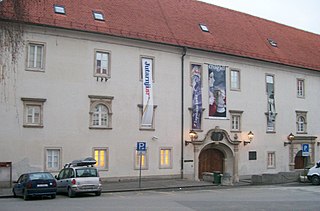
Klovićevi Dvori Gallery is an art gallery in Zagreb, Croatia. Opened in 1982, the gallery is named after the 16th century Croatian-born artist Juraj Julije Klović, considered to be one of the greatest manuscript illuminators of the Italian Renaissance.
16. Moderna galerija
Modern Gallery is a museum in Zagreb, Croatia that holds the most important and comprehensive collection of paintings, sculptures and drawings by 19th and 20th century Croatian artists. The collection numbers around 10,000 works of art, housed since 1934 in the historic Vranyczany Palace in the centre of Zagreb, overlooking the Zrinjevac Park. A secondary gallery is the Josip Račić Studio at Margaretska 3.
17. Ethnographic Museum of Zagreb
The Ethnographic Museum is located at 14 Ivan Mažuranić Square in Zagreb, Croatia. It was founded in 1919 by Salamon Berger. It lies in the Secession building of the one-time Trades Hall of 1903, designed by the architect Vjekoslav Bastl. The statues in the central part of the façade are the work of Rudolf Valdec. The frescoes on the interior part of the cupola were painted by Oton Iveković.
18. Arheološki muzej
The Archaeological Museum in Zagreb, Croatia is an archaeological museum with over 450,000 varied artifacts and monuments, gathered from various sources but mostly from Croatia and in particular from the surroundings of Zagreb.
19. Zagrebačko kazalište lutaka
Zagreb Puppet Theatre was founded in 1948 by the City of Zagreb, and is the oldest professional Croatian puppet theatre. The theatre is geared primarily towards children, which has also performed abroad and has participated in charitable work. Notable members of this theatre include Velimir Chytil and Krešimir Dolenčić.
20. Well of Life
The Well of Life is a sculpture by the Croatian sculptor and architect Ivan Meštrović installed in front of the Croatian National Theatre on Republic of Croatia Square in Zagreb, Croatia. It depicts people in various phases of life that crouch and twist their bodies around a well which symbolizes life, youth, and the source of eternal beauty.
21. bazilika Presvetog Srca Isusova
The Basilica of the Heart of Jesus is a Roman Catholic basilica located in Palmotićeva street of Zagreb, Croatia. It is dedicated to the Sacred Heart, and was designed by the Croatian architect Janko Holjac in the neo-Baroque style.
Wikipedia: Basilica of the Heart of Jesus, Zagreb (EN), Website
22. Evangelička crkva
The Evangelical Church in Zagreb is an Evangelical Lutheran Church located in centre of Zagreb, Croatia. The church was originally built in period from 1882 until 1884. The building is a free-standing single-nave neo-Gothic church.
23. Hrvatski povijesni muzej
Croatian History Museum is a museum of history located in the Vojković Palace on Antun Gustav Matoš Street in the historic Gornji Grad district of Zagreb, Croatia. The museum holdings consist of around 300,000 objects divided into 17 collections. In addition to a part of the Meštrović Pavilion, it also administers the Ivan Goran Kovačić Memorial Museum in Lukovdol.
24. Zagreb Botanical Garden
The Zagreb Botanical Garden is a botanical garden located in downtown Zagreb, Croatia. Founded in 1889 by Antun Heinz, Professor of the University of Zagreb, and opened to public in 1891, it is part of the Faculty of Science. Covering an area of 5 hectares, the garden is situated at an altitude of 120 metres (390 ft) above sea level. It is home to over 10,000 plant species from around the world, including 1,800 exotic ones. It has large ponds for aquatic plants. Some of Slava Raškaj's most notable works were painted by the garden ponds.
25. crkva svetog Ćirila i Metoda
The Greek Catholic Co-cathedral of Saints Cyril and Methodius is the historicistic co-cathedral church of the Greek Catholic Eparchy of Križevci. It belongs to the Vicariate of Diocese of Žumberak-Križevci. It is located in the Street of St. Cyril and Methodius on the Upper Town in Zagreb, near St. Mark's Square.
Wikipedia: Greek Catholic Co-Cathedral of Saints Cyril and Methodius, Zagreb (EN)
26. Mala scena
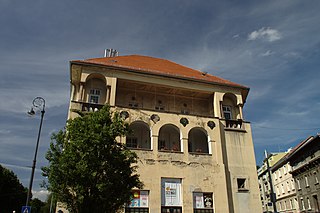
The Mala Scena Theatre is a theatre in Zagreb, the capital of Croatia. It is credited as Croatia's leading theatre for children. It is also the oldest private theatre for young audiences in Croatia. In 1996, the first Croatian president Franjo Tuđman awarded the founders Vitomir Lončar and Ivica Šimić with the Order of Danica with the figure of Marko Marulić for special merits to culture. In 2009, the theatre received the City of Zagreb Plaque for its work.
27. Narodni dom
The National Home Palace is a palace located in Gornji Grad, the old town of the Croatian capital of Zagreb, at Opatička Street 18. The palace is currently owned by the Croatian Academy of Sciences and Arts and hosts its Institute for the History of Croatian Literature, Theatre and Music.
28. Manduševac
Manduševac is a famous fountain on Ban Jelačić Square in Zagreb. It has great historical significance, and according to legend, Zagreb was named after him. Manduševac is depicted in heraldic symbols as the source on the coat of arms of the Zagreb County.
29. Bundek
Bundek is a park in the Novi Zagreb - istok city district of Zagreb, Croatia. It is located north of the Zapruđe and Središće neighborhoods. Bundek was renovated during 2005 to turn a badly maintained lake into a tourism and events center of Novi Zagreb.
30. Spomenik palim hrvatskim vojnicima u Prvom svjetskom ratu
The monument "Fallen Croatian Soldiers in the First World War 1914 – 1918" is the work of two sculptors, Vanja Radauš and Jozo Turkalj from 1939. It is located at the Mirogoj cemetery in Zagreb. The monument was originally erected in 1919, and the sculpture of the two sculptors was made in 1939. The inscription "To the fallen Croatian soldiers..." In July 1945, it was erased by the Yugoslav communists and until 1995 the monument was without an inscription. The inscription was renewed in the same year by the Association of War Veterans "Croatian Home Guard".
Wikipedia: Spomenik Palim hrvatskim vojnicima u Prvom svjetskom ratu 1914. – 1918. (HR)
31. Kazalište Komedija
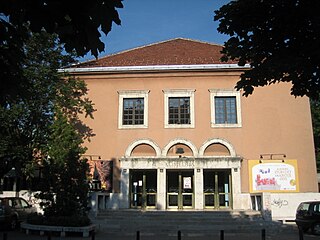
Komedija Theatre is a theatre in Zagreb, Croatia which specializes in musicals. It was opened in 1950 as a legal successor to the Zagreb Drama Theatre and the Vedri Kerempuh Theatre. Notable pieces that premiered there include the 1971 musical Jalta, Jalta and the first Croatian rock opera Gubec-beg (1981).
32. Satiričko kazalište Kerempuh
Satirical Theatre Kerempuh or Kerempuh Theatre, is a theatre in Zagreb, Croatia founded in 1964 by the notable theatre and movie director Fadil Hadžić. It is located on a slope behind Ilica street 31.
33. Blaise of Sebaste Church
Church of Saint Blaise is a Catholic parish church located in the Lower Town of Zagreb, Croatia. It is dedicated to the Saint Blaise, and was designed by the Croatian architect Viktor Kovačić in the eclectic style. It is notable for its cuppola, made out of reinforced concrete, first of its kind in the region.
34. Palača Dverce
The Dverce Palace is a palace owned by the City of Zagreb and is used for ceremonial receptions and other representative purposes organized by the Mayor and the City Assembly. It is located on Katarina Square, in Zagreb's Upper Town. The building leaned against the city wall, and it got its present appearance in the 19th century after reconstructions carried out by the architect Kuno Waidmann. Since 1912, the palace has been used for ceremonial receptions after its then owner, Countess Clotilda Buratti, left it to the City for representative purposes.
35. Savski most
The Sava Bridge, also known as the new Sava Kolna Bridge or Sava pedestrian bridge, is one of the bridges on the Sava in Zagreb. It was built in 1938, according to the project of Milivoj Frkovic, on the site of the older red bridge, as steel filled continuously groomed construction. Above two steel brackets was made by a reinforced concrete pavement panel, which together with its consoles gives the total width of the 9 m bridge. The Nivelet Bridge is a convex curve with an ultimate longitudinal decline of 1.65 %, and this roundness is accompanied by the Intradosa line, which is why it was obtained by the formation obtained a harmonious bridge. The construction of the bridge is extremely lean (1:21), considering the height of the carrier of 250 cm. For the construction of the bridge, steel of ST44 quality was used, problematic to weld the thick lamel of 95 mm thick, but despite this, the exceptional quality of the deceivation corresponds to the used steel was achieved using the preheating. Due to the complete conflict with Celik, the proven load -bearing capacity of the reinforced concrete slab later exceeded its predicted role as a mere load transmission. All of the above did the bridge with exceptional realization, notable in the world's professional literature. The bridge was placed under monumental protection in 1975. Today it serves pedestrian and cycling traffic as the other increased traffic needs of the area has taken over the Adriatic Bridge near it.
Share
How likely are you to recommend us?
Disclaimer Please be aware of your surroundings and do not enter private property. We are not liable for any damages that occur during the tours.
